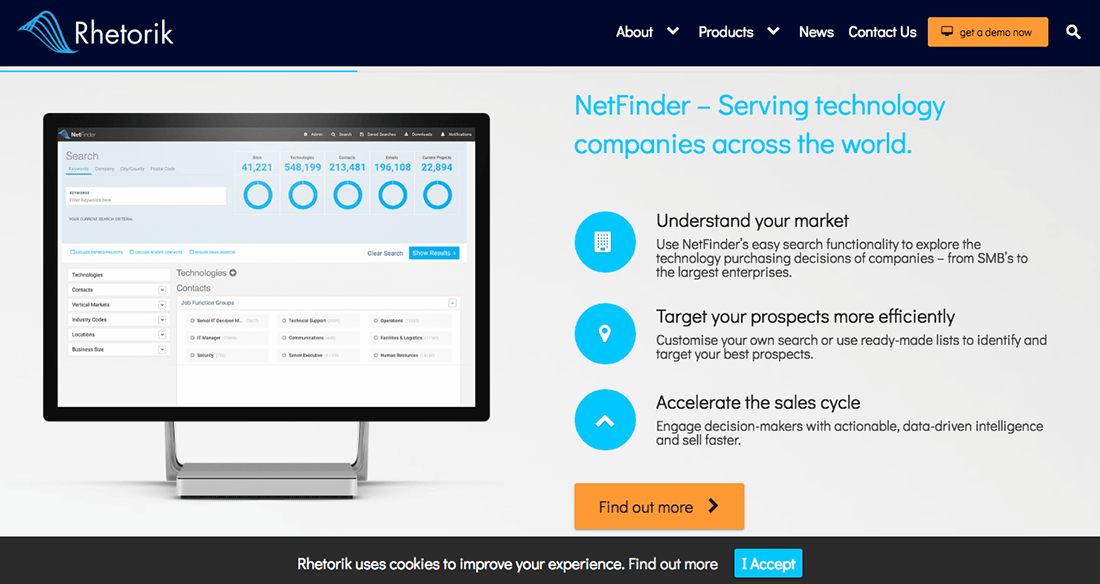
Selling opportunistically makes it more likely that you’ll squander your efforts on customers that won’t help you grow and achieve your goals. Tightly focusing on your...
Bad news, sales teams: it’s not practical to reach out to 100,000 prospects in the same industry. Not even if you’re making as many cold calls a day as humanly possible.
You have to whittle down the list. The best way to do that is with an ideal customer profile (ICP). You can look at creating an ICP like professional editing in movies or literature. You throw all the fluff out and boil it down to the most essential elements. That’s what Acquirent does on behalf of their clients.
We recently interviewed Geoff Winthrop from Acquirent to ask why you need a specific ideal customer profile—and how to come up with one.
We’ll cover the “how” first, with two pieces of advice from Geoff.
“Always answer a question with a question.” - Geoff Winthrop"
If the Acquirent team doesn’t have a clear vision of a client’s ICP, they go back to their clients and ask more qualifying questions:
Then they try to see if they can do a match with data providers. The key takeaway here is that when it comes to an ICP, the more specific the better.
Sure, you might take your list of 100,000 and boil it down to 5,000, reaching 95,000 fewer prospects. But you know that every single one of those fits your ideal customer profile.
Email is so important nowadays, yet a lot of data providers don’t even give out email addresses. They give out a basic file: name, address, phone number, and that’s about it.
No SIC codes, no revenues, which would allow you to find the ideal customer with data that matters. In any kind of sales (and especially in cold calling), it pays to have all the contextual information possible.
As for why you should worry about creating an ICP, the number one reason may be to avoid losing your best people to burnout.
Sales is a high-attrition business. You’re probably spending a lot of money hiring. It’s a war for talent out there . . . when you find great people, you want to hold onto them. You want them to feel like they’re getting wins. If they make 100 calls and 50 are based on bad data, the probability of burning them out is extremely high. Most businesses can’t afford to do that.
"Sales is only as good as the opportunities in front of it."
Salespeople are responsible for making their own good news, but a lot of times they need help from marketing. There are a lot of good marketing automation solutions out there, but plenty of people don’t fuel them with good data, which stunts the helpfulness of such solutions. Nobody should expect to buy data in a box, but you can absolutely learn to leverage it more effectively.
The usual importance of data is as simple as whether the phone number works, and whether you’re talking to the right person. However, if your organization has a highly transactional sale, with multiple levels of decision-makers, there’s a little more intricacy in that process. Then it becomes about having org structures. LinkedIn’s a great tool; being able to craft LinkedIn InMail campaigns is huge.
Basically, you have to look at the speed at which your sale closes to judge how you’re going to leverage data, how it’s going to fuel your team moving forward. Or to know whether your sale is large enough to warrant certain data acquisition in the first place.
Being an outsourced sales company, Acquirent’s report card is SalesForce.com. Others may use whatever their CRM is, but here’s the bottom line: these organizations have invested a lot of money in their analytics. You have to leverage those dashboards to determine whether your team is on target and to make educated decisions on how to tweak your processes. Obviously you have your eye on the end goal, but you should also have short-term mile markers: call numbers, monthly appointments, close rates on those appointments.
And it’s not a cookie cutter thing. Every business has their own KPIs that matter; you have to figure out what’s most important for you to measure. Then obviously you have to make your expectations crystal clear to your team.
Going after as many targets as you can isn’t the best way to hit the maximum number. Those targets, i.e. prospects, need to be the right kind. That’s where an ICP comes into play. Because, you know, target practice requires a little focus. This episode is based on an interview with Geoff Winthrop from Acquirent.
To hear this episode, and many more like it, you can subscribe to The Corporate Data Show.

Selling opportunistically makes it more likely that you’ll squander your efforts on customers that won’t help you grow and achieve your goals. Tightly focusing on your...
EMMQuery lets you search by specific industry, then search using multiple parameters within that industry until you find exactly the records you want.